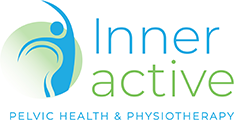Pregnancy is an incredible season of change—your body is growing, adapting, and preparing for birth. But with that change can also come some unexpected discomforts.
One of the most common conditions we see at Inner Active Peplvic Health and Physio is Pelvic Girdle Pain (PGP). The good news? You don’t have to “just put up with it.” With the right support, you can stay active, reduce pain, and feel more confident moving through pregnancy.
That Ache in Your Pelvis Might Be More Than Just “Normal”
It often starts as a niggle: a pulling at the front of your pelvis, a sharp twinge when you roll over in bed, or a dull ache after walking. Sometimes it even feels like clicking or locking in your hips.
Many women brush this off as just part of being pregnant. But when pain begins to change how you move, affect your sleep, or make day-to-day life harder, it’s your body’s way of saying: let’s get this looked at.
What is Pelvic Girdle Pain?
PGP refers to pain felt around the pelvic joints—usually at the front of the pelvis (pubic bone) or the back (tailbone and sacroiliac joints).
You might notice it more when:
-
Walking longer distances
-
Rolling over in bed
-
Getting in/out of the car
-
Standing on one leg (like putting pants on)
It can be sharp, achy, heavy, or unstable—sometimes even making you feel like your pelvis is “giving way.”
Why Does It Happen in Pregnancy?
Pregnancy naturally changes your body—hormones soften your ligaments, your posture shifts, and your growing baby adds load to your pelvis.
While these changes are essential for birth, they can also increase stress on your joints and surrounding muscles. Every woman’s experience is different—there’s no single cause and no one-size-fits-all solution.
What Can Help?
Here are some of the strategies we often share in clinic:
-
Support your joints – A pelvic belt or tubigrip can sometimes provide stability.
-
Modify your movements – Take smaller steps, keep your knees together when rolling or getting in/out of bed, and avoid standing on one leg.
-
Use ice for flare-ups – Short applications can help calm irritation.
-
Build strength where it counts – With the right guidance, exercises for your glutes, core, and pelvic floor can improve support.
-
Listen to your body – Don’t push through pain. Movement should feel supportive, not aggravating.
These are just starting points—the key is tailoring strategies to your stage of pregnancy and your body’s unique needs.
When to See a Women’s Health Physiotherapist at Inner Active Pelvic Health and Physio
You should reach out if:
-
Pain is affecting daily life—walking, working, or sleeping
-
You notice grinding, clicking, or locking in your pelvis
-
Self-management strategies aren’t enough
-
You’re unsure which exercises are safe for your stage of pregnancy
An early assessment with a physio trained in pregnancy care can ease your symptoms, give you clarity, and set you up for a more comfortable pregnancy (and smoother recovery).
At Inner Active Pelvic Health and Physio, This is What We Do
We don’t just hand out generic advice. We take the time to understand how your body is moving, what’s driving your pain, and what will work best for you.
Whether it’s hands-on treatment, exercise therapy, or practical movement strategies for your day, our goal is to help you:
-
Stay active and mobile during pregnancy
-
Reduce pain and improve sleep
-
Prepare your body for birth
-
Support your recovery postpartum
Final Thoughts
PGP is common—but it’s not something you need to simply tolerate. If you’re feeling pain, stiffness, or uncertainty about what’s normal, that’s the time to seek help.
Let’s keep you moving with confidence throughout your pregnancy journey.
👉 Book your pelvic health assessment with our team today.
By Jenna Tsai
Womem’s and Musculoskeletal Physiotherapist
